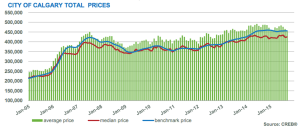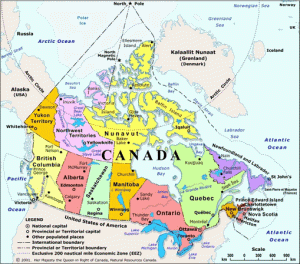A recent RE/MAX survey conducted by Leger found more than one in four Canadian homebuyers report feeling pinched by the stress test, which came into effect in January of this year. However, projections for the spring market show optimism with most markets expected to remain stable or improve. For the full report click HERE. Continue reading →
canada
2017 RE/MAX Recreational Property Report
As real estate prices remain high in Canada’s urban centres, young families are looking for unique ways to finance their dreams of recreational property ownership. In a recent survey conducted by Leger, more than a quarter (28 per cent) of Canadians with children under the age of 18 indicated they would consider selling their primary residence in the city in which they live in order to purchase a cottage, cabin or ski chalet. Other options that these potential buyers are willing to consider include fractional ownership in a shared property, purchasing a recreational property with a friend or family member, and renting out the recreational property they purchase on a vacation rental website such as AirBnB. Click HERE for the full report. Do not hesitate to Call Doug, Susan or Kristen as we can connect you with the BEST possible real estate professional to help you find your dream recreational property almost anywhere in the WORLD! www.penleymcnaughton.com

Remembrance Day in Calgary
There are numerous locations to choose from to commemorate those who have served. Our family chooses to attend the ceremony at the Field of Crosses located on Memorial Dr. between 3rd and Centre ST NW. The service begins at 10:30am this November 11th. There are over 3000 Southern Albertan soldiers who were killed in action that are represented at the Field of Crosses. If you have any questions in regard to parking at this location or anything else please do not hesitate to contact us as our office is located on 3rd ST NW adjacent to the service.
Click here for more information on all locations to attend a ceremony this Friday.

US Election & potential issues Canada shall face
It is a BIG today! Trade, immigration, pipelines, security and environment are just a few of the issues that the next President Elect will face that effect Canada directly. Each are proposing different agendas for the U.S. that pose questions, opportunities and challenges to cross-border relations. The world will be watching this historical election!
Click here or on photo to view full article
CALGARY REGIONAL HOUSING MARKET STATISTICS
Prices ease as expected
Inventories rise as sales activity softens further

Following four months of relative stability, unadjusted benchmark prices eased as expected in September to $456,100, a 0.26 per cent decline compared with last year.
Most of this aggregate moderation was due to price declines in the apartment sector brought on by higher-than-average inventory levels.
“Overall sales activity relative to new listings caused a softening in absorption rates, which resulted in inventory gains and ultimately placed moderate downward pressure on pricing,” said CREB® chief economist Ann-Marie Lurie.
Residential sales in the city totaled 1,448 units in September, well below typical activity levels for this time of year. Year-to-date Calgary sales remained below both the five- and 10-year year averages by a respective 10 and 26 per cent.
“Rising unemployment and persistent weakness in the local economy is impacting housing demand,” said Lurie. “However, unlike earlier this year when consumers were reacting to uncertainty, recent activity reflects current economic conditions.”
While all property types recorded a notable drop in the sales-to-new- listings ratio, both the apartment and attached segments saw the most significant declines. Ratios in both categories dropped to the 40 per cent range, while months of supply pushed up to 4.95 and 4.35, respectively.
In comparison, the detached category saw its ratio hover around 50 per cent in September and months of supply settle at 3.32.
Elevated inventory levels in the apartment segment, in particular, are the result of moderate listing declines relative to sales activity, noted Lurie. Year-to-date apartment sales have fell by 32 per cent, while listings have dropped by just seven per cent.
As a result, the apartment benchmark price totaled $290,600 in September, a 1.19 per cent decline over last month and 2.71 per cent below last year.
CREB® president Corinne Lyall said that while the apartment sector now favours buyers with added selection and attractive pricing, other factors will continue to play into purchase decisions.
“While the apartment sector offers more choice, not all units are created equal,” she said. “When considering apartment condominiums, it’s important to understand that the corporate and physical health of the building can also influence both buying and selling decisions in this type of market.”
Despite higher months of supply, typical home prices in both the detached and attached sectors remained relatively unchanged in September, totaling $517,200 and $357,000, respectively.
Although citywide inventory levels remained elevated compared to activity seen in the past three years, Lyall noted they still were well below highs recorded during the previous economic downturn in 2008/09.
“There is no question that we have seen a shift in our local housing market conditions, but it needs to be put in perspective,” she said.
Aggregate prices have eased by one per cent from the beginning of the year, a moderate correction when compared against the aggressive gains last year that averaged more than nine per cent, noted Lyall.
Click Here for the full .pdf of the CALGARY REGIONAL HOUSING MARKET STATISTICS
Check out our newsletter: YYC Newsletter Sept 2015
Recession???
StatsCan addresses recession
Statistics Canada is reporting that GDP fell in the second quarter, confirming fears that the economy was in recession for the first half of 2015.
StatsCan says the economy contracted at an annual pace of 0.5% in the second quarter of the year which is slightly less than analyst estimates and also lower than the 0.8% decline in Q1.
June ended the GDP’s five-month losing strak with a 0.5% gain. Most notable was a 3.1% increase in natural resources extraction suggesting oil prices could be near a bottom.
While this contraction over the first half of the year isn’t anywhere near the contraction during the Great Recession of 2009 — an 8.7% decline in first quarter and 3.6% decline in second — it does provide interesting conversation for leaders of the three major political parties on the road to the October 19 election.
The recession conversation continues.
 Click Here to check out more information on how Canadas doing…
Click Here to check out more information on how Canadas doing…
Entire country will pay price if oil logjam isn't cleared soon…

It would be nice to think a visit to Alberta and the oilsands by New Brunswick’s premier would be all that is needed to significantly move the yardsticks on alleviating the impact of burgeoning oil supply in the absence of adequate transportation options.
It’s heartening to see a premier from a province other than Alberta or Saskatchewan personify what it means to be part of Confederation.
By coming to Alberta and visiting the oilsands, Premier David Alward sent the rest of Canada two very important messages.
One is that Alberta’s issue of too much bitumen and not enough export access is not just an Alberta problem – it’s a national one.
The second message implicit in his visit was, that as part of a Confederation, there are times when it’s important to work together to solve problems.
It all helps – but it’s not enough.
According to a study published by the TD Bank, energy sector investment accounted for 20 per cent of Canada’s economic growth in 2010 and 2011.
A 2012 report by the Canadian Energy Research Institute estimated if the pipelines currently planned are not built, Canada will forego $1.3 trillion in terms of economic growth and $276 billion in taxes between 2011 and 2035.
That’s not small change. As things stand right now, the differential is costing the sector, and the country, $75 million a day in lost revenue.
What does this mean? While Imperial Oil might have kicked off the ‘uh oh, costs are rising’ refrain last week when it revealed its Kearl Lake project will cost $2 billion more than expected, the announcement by Suncor late Tuesday hit a home run in the context of the longer term implications of being landlocked in bitumen.
Suncor’s $1.5 billion writ-edown on its Voyageur project shows the current economics don’t support the development of the resource.
This is all about rising costs and wide differentials that decrease the returns per barrel.
Ultimately this leads to a decline in investment.
It’s not a happy picture.
What could change it?
Sending oil eastward via TransCanada’s infrastructure and on to New Brunswick would help, however, the reality is this can’t happen overnight.
The pipe ends at Quebec, which means a new pipe would have to constructed from Quebec to New Brunswick. The time frame for this would extend into 2018 or 2019; not soon enough to narrow that gap, which has been as great as $42.50 per barrel in December.
As a reality check, oil traded at a level as big as that differential back in 2004, when West Texas Intermediate averaged $41.43 US per barrel.
Of course, if TransCanada’s Keystone XL Pipeline were to be approved by U.S. President Barack Obama – and he is the one ultimately responsible for giving it the green light – the issue of the differential would be addressed.
What Obama must wrestle with is that the approval of Keystone will stand as an acknowledgment that the United States is going to need oil as part of its ongoing energy mix.
The question, perhaps, that Canadians – and more specifically, Prime Minister Stephen Harper – should be asking is whether there is anything Canada should do to get Keystone approved?
Last week the journal Nature pointed out emissions generated by oilsands production is not something that should be taken into consideration in the Keystone approval process as they don’t occur in the United States.
However, is it time for Canada to look at a way to internalize that so-called cost of carbon as a way to neutralize the environmental opposition to oilsands development?
The Canadian government has long said it would follow the lead of the U.S. when it came to setting carbon policy.
But it might just be time, for the sake of the Canadian economy, to look at things from a different perspective and take the lead on an issue that the U.S. itself has successfully avoided. When examined from this perspective, it boils down to an issue of leadership at the federal level.
What is Prime Minister Harper prepared to do to ensure the long term economic prosperity of this country?
“Governments could also champion the economic opportunities that increased production and diversification of markets could provide,” said the TD Bank in its study.
Where is that ‘government championing?’
So far, there has been some support from provincial leaders – thanks in large part to Premier Alison Redford’s efforts, but the silence from the prime minister’s office on this issue, thus far, has been deafening.
On Wednesday, the University of Calgary’s School of Public Policy released a study addressing the challenges faced by the lack of export capacity.
What’s needed, said Michal Moore, one of the study’s authors, is a mechanism through which a plan for alleviating the constraints to continued growth.
“We’re not being coordinated in our responses … there is no forum to uniformly discuss all those (options). The eastern pipeline is attractive, but I don’t have a standard by which to weigh it today, but I don’t think anyone does either. And what our premier is pointing out … is the need for some sort of a common forum to discuss an energy strategy where we all can see what the facts are at the same time. It’s (the eastern pipeline) attractive, certainly stimulates public interest.
“I don’t have any numbers by which to vet it but it highlights the issue that we don’t have a common strategic forum by which to discuss it,” said Moore.
And so, the puck goes to you, Prime Minister Harper. The time has come for you to take a shot, and lead.





